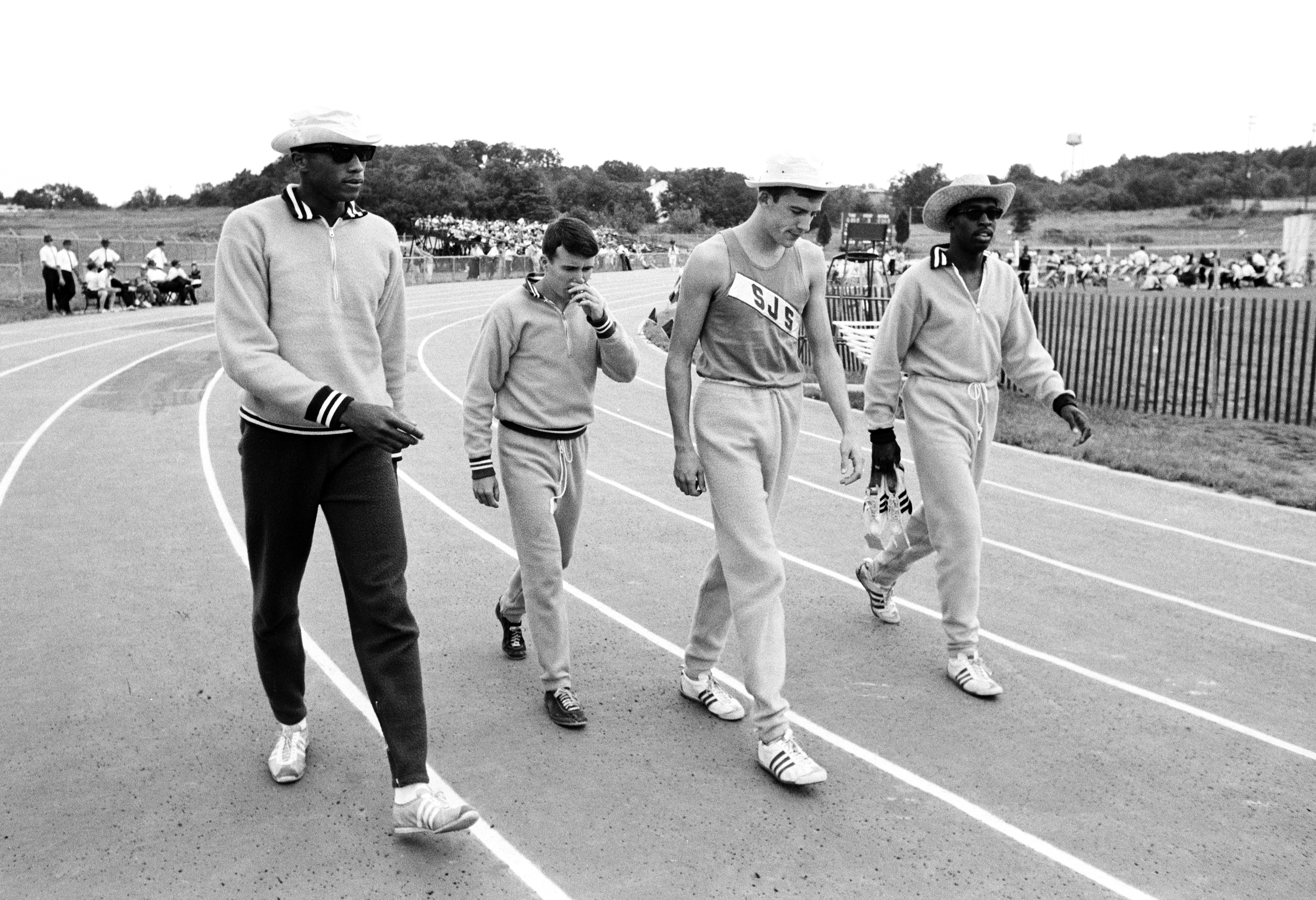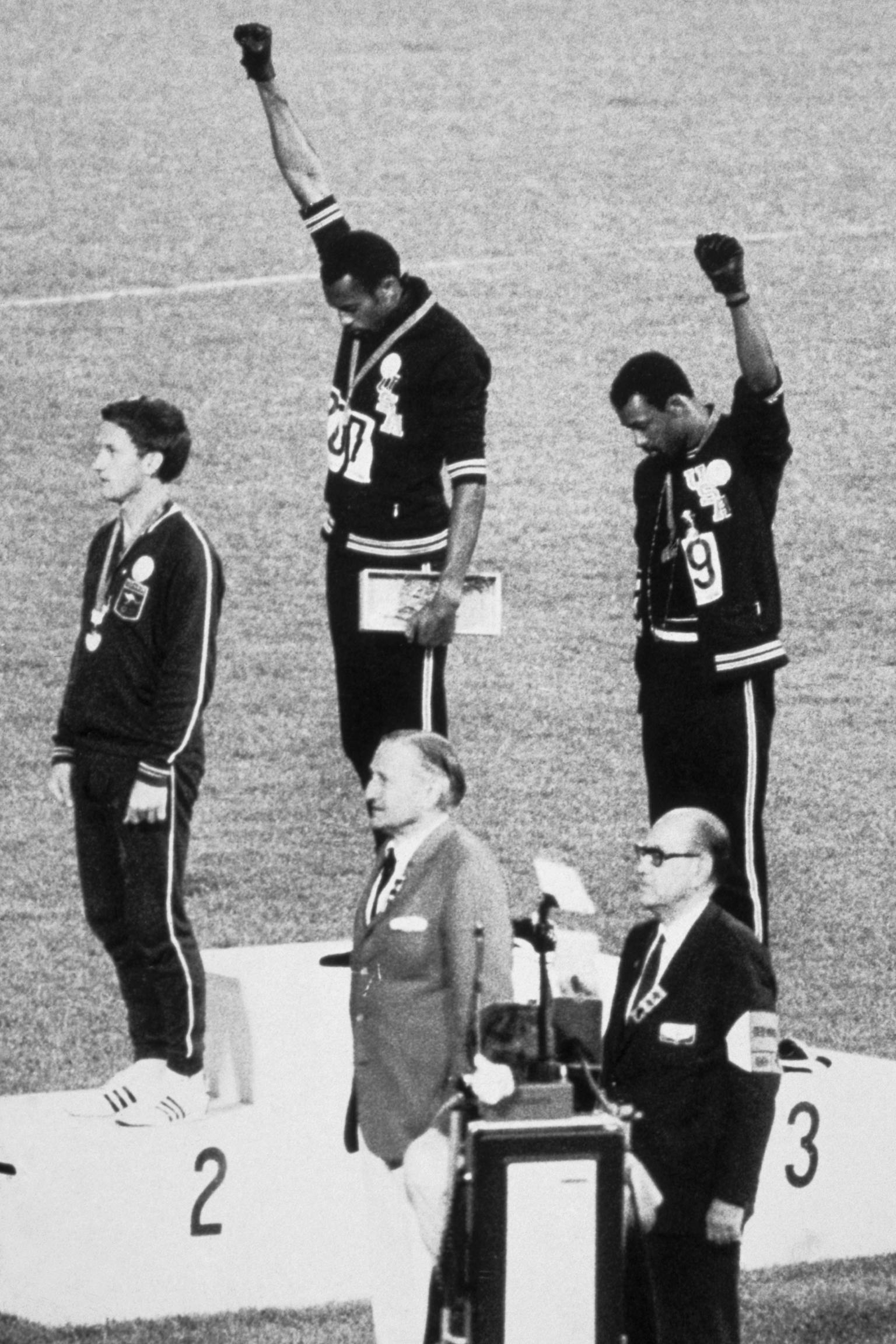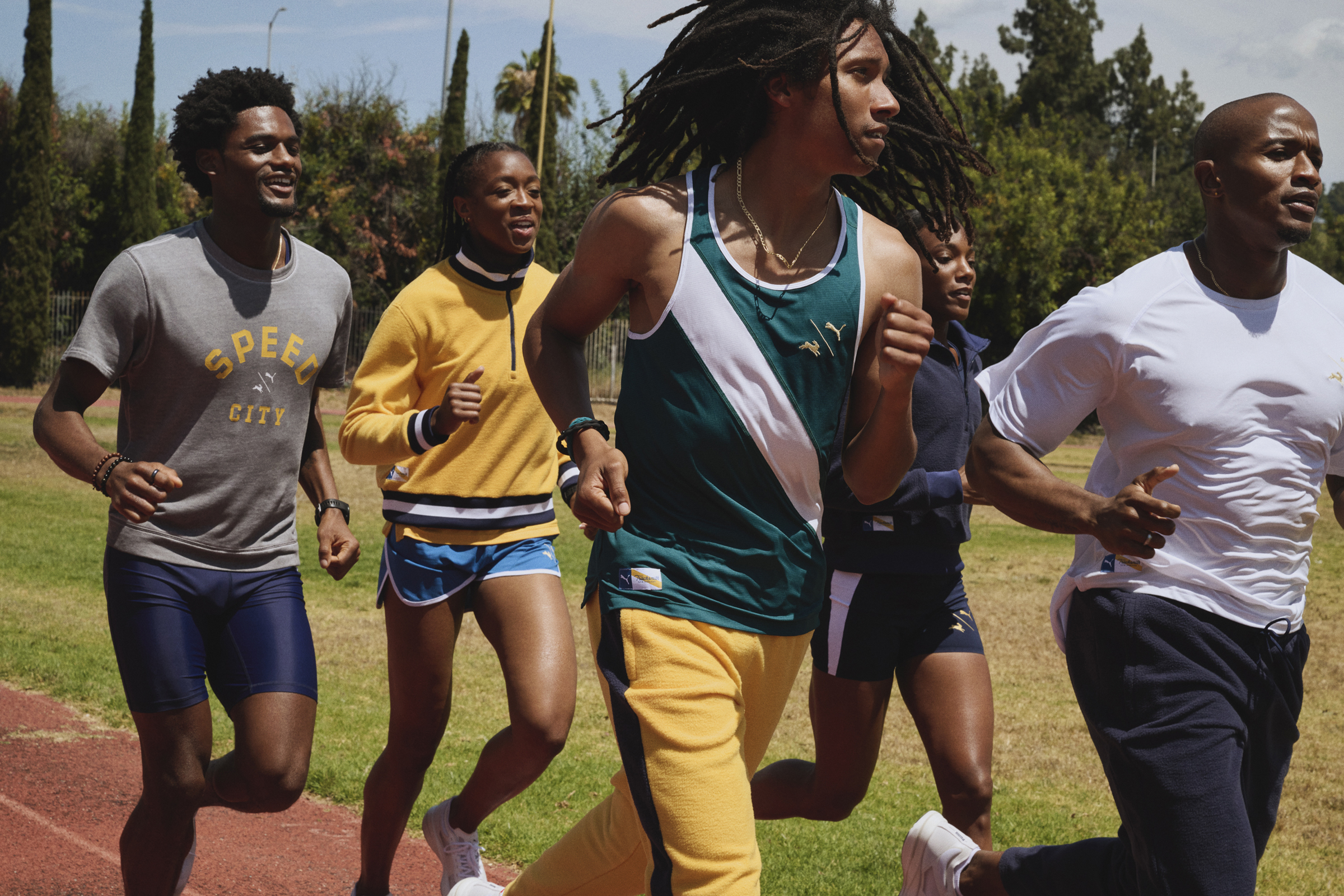
Reflecting on
the Legacy of Speed City
Despite being one of the most impactful running programs in the history of our sport, the story of Speed City has been largely overlooked. While John Carlos and Tommie Smith are seen as heroes today, their activism in 1968 earned them derision and censure. As a program, Speed City’s dominant era came to end in 1988, when San Jose State cut men’s Track and Field. The team was reinstated on Oct. 16, 2018 — the 50th anniversary of Smith’s and Carlos’ protest in Mexico City. On the Legacy of Speed podcast, Malcolm Gladwell examines the complete history of the program, from its inception to its connections to today’s sprinting icons and athlete activism. As part of this conversation, we asked runners to share their own reflections on the legacy of Speed City.

As a nation, we tend to look fondly upon the civil rights movement as a unique moment of American triumph, that we, together, rose up to defeat the common enemy of racism. This is the work of revisionism: it functions to obfuscate and mislead. The truth is that it was individuals who rose up, oftentimes at great risk to their livelihoods and safety, to demand that America live up to its promised ideals. When Tommie Smith and John Carlos stood atop that podium in an act of defiance, they understood the risks involved: in the late ’60s, civil rights leaders were being killed. It is hard to imagine the very real risks that those men felt and the deep conviction that compelled them to act in spite of them.
These men did not inherit a changed America after they left the podium, they had to wait decades before their actions were appreciated by the broader American public. But knowing the social costs of their actions, they challenged us to be better.
With the advent of time, we now regard their actions and stance as correct. Our challenge as a society is to recognize injustice in the moment when it occurs, not when the issues are in the past and the social costs have been removed. The passing of time creates distance away from the issues, and the consequences, such that the morally right choice is easy to select. We can easily celebrate Smith and Carlos now that we are observers of the Civil Rights Era in America rather than living through it.
Colin Kaepernick has yet to play a snap in the NFL since his protests in 2016. Gwen Berry was put on probation after her protest on the Pan-American Games podium in 2019. The same organizations and individuals that speak highly about equality and the work of those such as Smith and Carlos who fought to secure it are the organizations and individuals who have found it difficult to support contemporary fights for equality and justice.
Protest is by its very nature disruptive – it is meant to create discomfort. Our job, as a society, is to recognize the value of well-intentioned protest, protest that fights to make the world better for those who have been left behind. It takes enormous bravery in order to stand for what is right in spite of social consequences.
Let’s not wait for decades to pass in order for us to support righteous fights for equality and justice. Let us not wait for time to render an issue innocuous before we lend our support. We have the capacity, as individuals and organizations, to take a stand when it matters most.
When we look at the statue of Smith and Carlos, we should look at it not as a representation of a collective achievement, but rather as an example of what extraordinary courage looks like. We should look to it as a call for us all to be better: a demand for us to challenge ourselves and each other to create a more inclusive and just world.
The Speed City
Community
CAROLYN SU
What does the legacy of Speed City teach us? As a middle-of-the-pack runner, and as a non-Black, Person of Color (I’m Chinese American), it might be easy to look at that iconic photo of Tommie Smith and John Carlos’ black-gloved fists raised in the air, on the podium at the 1968 Mexico City Summer Olympic Games, and view it simply as a significant demonstration during a moment in history. But when we pull back the lens, we see that there was, in fact, a whole community of people who played crucial roles in bringing about that moment.
There was also a Bud Winter, a Harry Edwards, and a Peter Norman. There were people surrounding Tommie Smith, John Carlos, and Lee Evans — people who were a part of their daily lives; people who shared their same, lived experience in the sport; and people who grew up being taught to not only have an awareness of social inequities but to also take action, even if those actions are costly.
Yes, while some of us may be the ones on the podium, bearing the weight of the spotlight as our platform for change, many of us are, in reality, the Winters, the Edwards, and the Normans — the faithful and consistent coach, guiding someone to realize their fullest potential; the persevering mentor, teaching others to find and use their voice, helping them to see the possibilities for a greater good; or the supportive peer, willing to join another in the work, even if it comes at personal cost.
The point is, that we *all* wield power for change and influence, right where we are, in the relationships we have. No matter which arena, whether large or small, we can ask ourselves: how can I affirm the presence of those around me? How can I advocate for the needs of those not being considered? How am I using my voice to ensure safety, equity, and accessibility for all who want to participate? In our local running groups, our neighborhood, our workplace, and our home?
When we understand that the legacy of Speed City reaches beyond that pivotal moment in Mexico City, we can start to recognize the power we each hold, even in the ways we show up in our everyday spaces, to change the world, one relationship, one workout, one run at a time.
Running is a
Vehicle for Change
TOMMIE BAILEY
The iconic image of Tommie Smith and John Carlos standing on the podium proudly with their fists raised was ingrained in my mind’s eye at a very early age. It was a symbol of courage, pride, strength and hope that is such a beautiful moment in history. Learning more about the story behind the image series has added to what Speed City (John Carlos and Tommie Smith) mean to me…confirmation and permission.
Confirmation that running, albeit a very personal and physical endeavor, is a vehicle for change. That personal change driven by the commitment required to improve reaches far beyond ourselves and our inner circles…it has the potential to impact the world. The greatest gift of this story is confirmation that what we do, no matter how “small” the gesture, our acts hold more power than we could ever imagine in the moment. Hearing the passion with which they share their stories, even to this day, is an inspiration that gives myself and many others permission to keep pushing! Keep pushing for social change. Keep challenging our communities. Keep pushing for equality and representation within the running world. Permission to keep looking for “good trouble.”

Culture of Courage
TINA MUIR
We all know the iconic photo, but I know I had not given much thought to what went into that moment. I had no idea of all the details hidden in plain sight, all the emotion, heart, and courage that went into it. As someone who tries to amplify inspiring leaders doing the work in their community to make change happen, understanding the legacy of Speed City has been an integral part of deepening my understanding of what that means. Tommie Smith, John Carlos, and Lee Evans put everything (including their lives!) on the line to represent Black America, and once again, this is a reminder for us to let Black America share their truth with the world, and be ready to support in whatever capacity they need. This story has helped me to see that courage doesn't always mean using your voice to speak up, we all have our own powerful way to connect with humanity, and it is time to use it.

After a failed Boycott of the 1968 Olympic Games in Mexico City by Black athletes, Tommie and John managed to use their platform to further the issues and amplify them on the world stage. Instead of exiting the games, it was determined that the best use of their voices was to remain and fight from within. The reasoning being that to be heard you must be present to advocate for yourself and cannot separate yourself from the oppressive institutions you are trying to change. Showing up with clear demands of what they wanted to change was also important and necessary. 2020 showed Tommie and John’s legacy in action as the world collectively showed that silence may not be the most helpful, and that noise can awaken conversations and produce results.
Their rejection of the “shut up and play” mindset expected by athletes as the games were seen as sacred and apolitical spaces remain timely. As a Black athlete, a female athlete, or any athlete who shows up in a body that is regulated in some way by laws or societal expectations, it is impossible to separate the player from the politics, and we should not be expected to. Humanity should always come before sport. One cannot be separated from the another and the humanity of those we love to cheer for has to be considered. Always.
Tommie, John, and Bud imparted so much knowledge with their actions, but the lessons I hope to always carry with me focus on the intentionality in the symbolism of their protest, the trusting of others to accomplish their goals, and the willingness to risk their careers and lives for the greater cause. Their last minute inclusion of Peter Norman is often overlooked, as is their trusting of the white American rowing team to obtain the pin he wore, but without those elements, the protest would not have been as impactful. Peter was not an ally, but a co-conspirator, who also believed in the message and the goals, and they all took that risk, together. If there is anything that we can learn from these men is that if we are to move the needle, it truly will take a group effort and sacrifice from all. As athletes, we have to remember that our accomplishments on the field are meaningless if we are not using our voices to incite change beyond ourselves. That is the lesson and the legacy of Speed City.
